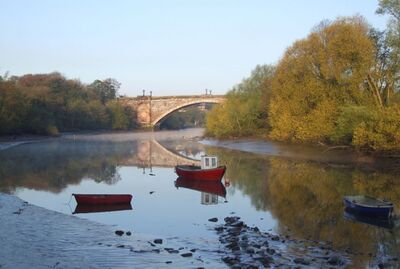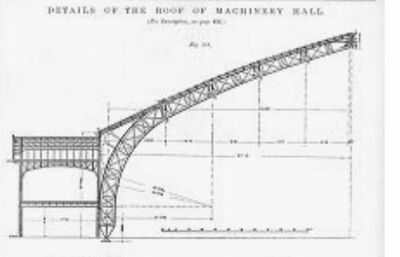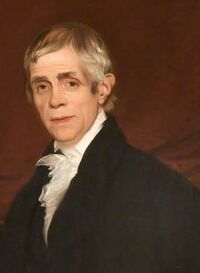Grosvenor Bridge
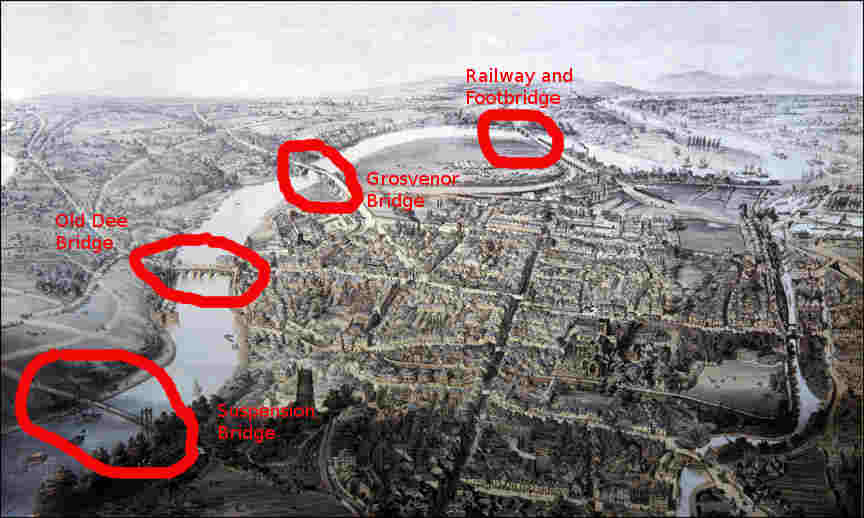
History
The Grosvenor Bridge was built between 1827-1833 in order to ease congestion on the Old Dee Bridge at Handbridge, which by the beginning of the 19th century was the only crossing across the River Dee in Chester. The bridge is located on the A483 Grosvenor Road. The medieval Old Dee Bridge was almost constantly congested and an alternative route was "urgently" required. A major historical puzzle about the bridge is why it was built (1833) so high above the river (supposedly for shipping to pass to the very short length of river upstream) when a very few years later (1846) the railway bridge downstream was very much lower. Another historical fact about the bridge is that it came close to not being designed by Thomas Harrison but could have been the first work of Isenbard Kingdom Brunel.
The Committee
In 1808, Chester Corporation decided to hold a competition to select the best plans for a new bridge across the Dee. A committee was empowered to consider plans, surveys and estimates. Nothing much happened for ten years. However, a serious blow for the viability of the Port of Chester was the building of what is now the A5 by noted engineer Thomas Telford from Shrewsbury up to Holyhead. The committee "woke up" in 1815 when Telford was appointed to the new road project and it was seen as a threat to Chester's Irish trade. On September 2nd 1818 the Grand Jury, meeting in its room at Chester Castle passed the following resolution:
- "We, the Grand Jury of the County of Chester, having considered the state of the present bridge over the Dee at Chester and the avenues thereto, cannot but approve of the erection of a new bridge as a measure highly beneficial to the public at large and as a National undertaking most important to the intercourse between England, Wales and Ireland. But as it is within the jurisdiction of the City of Chester we do not conceive it to be within our province to interfere in any manner with the building of the same."
The Jury would have been aware that the "Exchequer Bill Loans Commision", which had been set up to finace public works such as roads, harbours and bridges, had now been in operation for over a year and Chester had still hesitated to take advantage of this source of funding.
Following a public meeting at the Chester Town Hall (in those days the "Exchange") on 28th Deptember 1818 a resolution was passed that:
- "... the existing mediaeval bridge [at Handbridge] and the avenues thereto, which are the principal communication between the great manufacturing counties of Lancaster and York and the whole of the North of England, with the West of England, and with Wales and Ireland, are not only highly inconvenient but absolutely dangerous to passengers in carriages, on horseback and on foot."
A "Dee Bridge Committee" was appointed to:
- "..receive and consider plans, surveys and estimates, and the most expedientmode of providing funds for carrying out these resolutions into effect"
At its first meeting, held on 3 October 1818, the Dee Bridge Committee appointed the somewhat aged architect Thomas Harrison (then in his mid 70's) to supply plans for a new bridge. Within a remarkably short peiod of ten days Harrison provided a design for an iron bridge costed at £17,740. This appears to be very little time in which to calculate loads, materials and expenses for what was a very new material and one which Harrison seems never to have worked with before.
At that time Chester was still a shipbuilding city. The Dee is a tidal river up to the Old Dee Bridge and the weir, with the result that the water level beneath the bridge can vary significantly during the day. Thus, the new bridge needed to be high enough to allow ships to pass beneath. All plans then came to a standstill until 1824 (Telford had started work on the Menai Bridge in 1819 and it was now nearing its completion in 1826), when on 17th August another public meeting was held at the Exchange, the outcome of which was an appeal to Parliament for an Act to empower the construction of a new bridge and the construction of the appropriate roads. This involved the demolition of St Bridget's Church and other buildings.
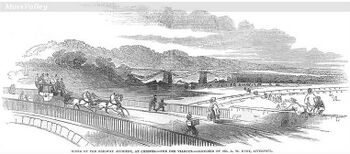
On 10 June 1825 Royal Assent was given to the Act providing for:
- "... the erection of an additional bridge over the River Dee in the City of Chester; for the making convenient Roads and Approaches thereto and for taking down and rebuilding the parish church of St Bridget and for repairing the present bridge."
The Commissioners
With the passing of the act the Dee Bridge Commissioners had come into existence and, taking over from the Dee Bridge Committee elected at the meetingin 1818, were charged with the responsibility for getting the new bridge built. At their first meeting on 27 June 1825 the Commissioners appointed a sub-committee to considerthe various schemes which Thomas Harrison had put forward over the intervening years. These had included designs for iron, single-arch and triple-arch stone constructions withestimated costs in the region of £30,000.
Although Harrison was appointed the chief architect for the bridge, his designs were by no means readily accepted. Harrison at first submitted a design for an iron bridge which was rejected in favour of a stone structure. Harrison put forward a radical design with a single stone arch spanning an incredible 200ft. Again, this was rejected - hence the scale model which now stands near Chester Castle was designed to counter arguments which claimed a bridge with such a large sandstone arch was not possible.
The worries of the sub committee are evident from the Dee Bridge Commissioners Minute Book:
- ".. Your committee would have been highly gratified could they have honestly recommended to your adoption a single arch of masonry. There can be no doubt that such a bridge would have been most worthy of the genius of the venerable architect, and would have best harmonised with that noble edifice, the castle. But the immense expense attending upon every part of its execution - the foundation of its abutments - the centring and the importation of the granite, of which it must be built for the freestones of our district would not bear the pressure, compels us to abandon it .."
All of this dither may have had another reason behind it. Interests in Chester had contacted Mark Brunel (25 April 1769 – 12 December 1849) who is nowadays best known for the construction of the Thames Tunnel (between 1825 and 1843) and as the father of Isambard Kingdom Brunel. The Thames Tunnel was originally designed for horse-drawn carriages but instead was used by pedestrians and became a tourist attraction. In 1869 it was converted into a railway tunnel as part of the East London line and is still in use today. In November 1825 George Harrison (no relation of architect Thomas) visited Rotherhithe, where Marc Brunel was completing the initial shaft from which the Thames Tunnel would cut, and there were discussions about the construction of the proposed bridge over the Dee. Brunel’s idea was to construct the new bridge of "rubble" — by which he meant brick or stone set in mortar and reinforced with iron — with a facing of solid masonry. Since he said that he could make it in this way with a single arch span of 200 feet at a cost of £10,000, Harrisongot very excited and wrote to Brunel the day after their meeting. Brunel responded to George Harrison’s letter with a request for information on the height of the arch, an indication perhaps that his estimate of £10,000 was made without knowing fully the dimensions and specifications of the bridge. However, even when given these details, his reply of 23 November was devoted mainly to general comments on the use of rubblestone for the arch instead of granite, the method of construction which was being proposed at the time. Pointing out that the pyramids were not constructed of granite and that the Romans had made extensive use of bricks, he pronounced that employing granite was paying too dear simply to make a monument that might last for ever. Further letters were exchanged but matters may have been affected by Marc Brunel's ill health: he had worn himself out sinking the shaft for his tunnel. Brunel was obviously impressed by the scale of Thomas Harrisons proposal:
- "... the most striking feature of the [Thomas] Harrison bridge is the magnitude of its proportions. A structure of this character must be to the eye what the Parthenon is to the Spectator, an insulated mass set off to the most advantage by a background that tends to magnify the object. When we see an arch of cast iron of 210 feet span we are struck with admiration but if it was of stone or of that imposing character we should view it with something more than admiration, it is the sublime and beyond the powers of description!"
Brunel eventually supplied more detailed estimates and even a drawing (it was now December 1825) and no doubt the Commissioners were having trouble stalling matters further. There then came a major blunder on the part of the Commissioners that effectively set them on the path to the bridge we see today. Brunel had illustrated his proposal for the arch with a sketch which only showed one half of the bridge - the other half would be identical and it was an engineering convention, when for example drawing the hull of a ship, to only show one half. Inexplicably the sub-committee of the Commisioners linked his estimate of the cost to this sketch and assumed that the figure of £15,000 was for the construction of half a bridge! Brunel quickly put them right but the sub-committee had gathered momentumn against his proposal. Brunel even offered to send his son Isembard up to Chester to discuss the matter. Although Isembard was only 20 years old at the time, his father evidently had great faith in his ability.
In the event Harrison's proposal for a single arch made of sandstone was accepted, after taking into consideration his comparatively tiny scale model. Problems with finding stable ground for the foundations and the required parliamentary permissions then delayed matters for several years. Eventually engineer Thomas Telford found a stable region of the bank where the bridge could be safely constructed. The delay of parliamentary permissions is interesting, given that Chester's MP's at the time were both Grosvenors. George Harrison continued to try to keep the options open to switch to Brunel, but by now both Brunels were very much involved with the Thames Tunnel. Somewhat reluctantly Brunel put in his bill for work so far:
- "... for statements and estimates relating to the mode of constructing a bridge over the Dee and for professional communications with the Commissioners between 9th December 1825 and the middle of February 1826; also for subsequent communications at the end of February with Mr Finchett Maddock [Town Clerk of Chester] for the purpose of laying plans and other papers before the Loan Commissioners in London - £63."
It is often stated that the first stone of Harrison's Grosvenor Bridge was put in place by the Marquis of Westminster. This is not entirely accurate as the stone was laid on the 1 October 1827, when Robert was still Earl Grosvenor. However the bridge did give him a very impressive overture to the driveway leading to his new mansion, variously described as:
- "the most gaudy concern I ever saw .. a vast pile of mongrel gothic which ... is a monument of wealth, ignorance and bad taste".
Harrison did not live to see his bridge completed. In fact he resigned as bridge designer on the 8th January 1826 well before the foundation stone was laid. It is illuminating to read in the minutes of a meeting held in that January that Mr. Harrison’s account for “money expended” amounting to £77 6s. Od. was approved for payment and a recommendation made that the Commissioners should pay him £315 for his professional advice. As far as can be gathered this small sum was all that the architect received for his skill and work in the designing of three alternative bridges. In contrast, Finchett-Maddock and Potts collected huge sums from the legal business connected with the project while Telford charged £168 for his site inspection and report. He died aged 85 at his self-designed home, St Martin's Lodge - overlooking the bridge - in 1829. He was buried in the churchyard of the new St Bridget's Church which replaced the old one which had been demolished when his bridge was being built. Work on the bridge was completed by his pupil, William Cole (1800-1892) who, upon completion of the bridge treated himself to a trip to Italy, Greece, Asia Minor, Egypt and Morocco.
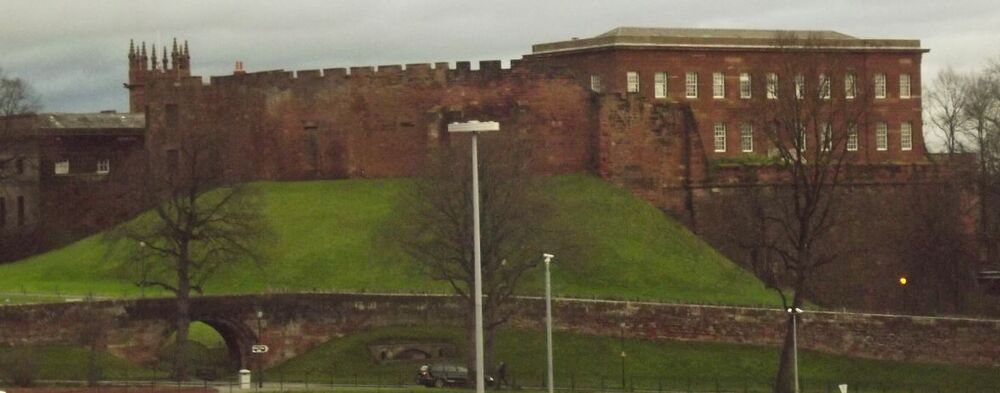
Completion and Tolls
The bridge was opened by Princess Victoria of Saxe-Coburg-Saalfeld on 17 October 1832, although it did not open to traffic until November 1833 (after delay over payments to the contractor - who appears to have over-run on his estimates somewhat). Lord Robert Grosvenor (the local MP) led the Royal procession on horseback, with the Princess and Duchess was the Marquis and Marchioness of Westminster. They were followed by carriages containing Mr George Wilbraham MP and Lady Anne Wilbraham, Lord Ragot and family, Sir Jobn Conroy, the Baroness Lehzen, Lady Catherine Jenkinison, the Earl and Countess Grosvenor and Countess Wilton. The Royal party was welcomed by the Mayor of Chester who called on the young Princess to formally name the bridge. In a firm voice Victoria said:
- "I seize the occasion of our being the first persons to pass over this magnificent bridge to lend myself to the feeling that prevails and to name it Grosvenor Bridge."
It might seem that the king should have opened so prestigous a bridge, but at the time of its opening there was an ongoing crisis over the Reform Act, which had just granted seats in the House of Commons to large cities that had sprung up during the Industrial Revolution, and removed seats from the "rotten boroughs": those with very small electorates and usually dominated by a wealthy patron - these included Chester.
Hemingway describes the bridge as follows:
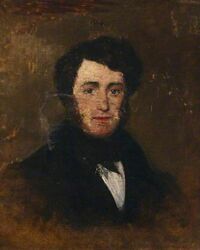
- "The bridge consists of one main arch, with a small dry arch over the towing path on each side, by which a land communication is preserved on both sides the river. The great distinguishing feature of this edifice is the unparalleled width of the chord or span of the main arch, which is of greater extent than that of any other ever known to constructed. The execution of the project required a daring genius, equal to the boldness of the conception; and a competent undertaker was found in the person of Mr. Trubshaw, a gentleman of Staffordshire, who is concerned in the building of bridges and public edifices. The terms of the contract were the erection of the bridge £29,000, and for forming approaches £7000 making a total of £36,000. The archetect Thomas Harrison Es.,q and the surveyor Mr Jesse Hartley of Liverpool."
At its opening, the Grosvenor Bridge was indeed the longest existing single-span stone arch road bridge – at 200 feet across and 60 feet high – in the world (the Trezzo sull'Adda Bridge completed in 1377 had been longer, but was destroyed during a seige 1416). The Grosvenor Bridge held the world record for thirty years when it was surpassed by the "Cabin John Bridge" in the USA, 220 feet across and 57 feet 3 inches high. The Grosvenor Bridge is still the longest masonry arch in the UK, and number 19 in the world. The arch is of Anglesey limestone, the rest red and cream Peckforton sandstone ashlar. The abutments were built directly onto sandstone on the North bank of the River Dee, the South side being built off a stone 'table' supported on timber piles driven into the boulder clay. The spandrels are constructed with voids to reduce the self weight. The "Cabin John" bridge looks very similar to the Grosvenor Bridge but is narrower, and has single lane operation. The chief builder of the Grosvenor Bridge, James Trubshaw, described it as:
- "a lasting monument to the glory and superiority of Great Britain".
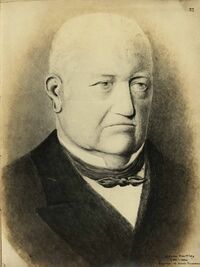
Jesse Hartley (1780-1860), the surveyor and clerk of works for the Grosvenor Bridge, became the first full-time professional dock engineer in the world when he became "Civil Engineer and Superintendent of the Concerns of the Dock Estate" at Liverpool in 1824. He held that post for life. He had previously worked for his father Bernard Hartley, a stonemason; architect and bridgemaster John Carr; and the Duke of Devonshire. He designed the Albert Dock to his then new "fireproof" specifications and much else in Liverpool's docklands.
Tolls wer imposed to recover the £50,000 (£4,240,000 as of 2016) total cost of construction including the £36,000 eventually paid late to the contractor. Hemingway, pro-Grosvenor editor of the "Chester Chronicle" considered the tolls to be excessive and was critical of them, writing as follows in 1836:
- "While the erection of this bridge is allowed to be a decided improvement, and a great ornament to the city, some doubt much whether the excessive tolls which it imposes will not materially injure its trade. Already new roads have been made from the town of Hawarden to the King's Ferry on the Dee and from thence to the Mersey opposite Liverpool, and coaches set up by which Chester is comparatively avoided as a thoroughfare. The amount for which the toll at the New Bridge is now let, including that at Handbridge, is £2800. The money for erecting the bridge was raised in hundred pound shares but hitherto the shareholders have had no reason to congratulate themselves on their speculation."
Hemingway is referring to the route including the new turnpike road which opened in 1833 running from the Wirral to the river ferry at Queensferry. This road is now the A550. The original routes into North Wales meant using fords when the Dee estuary was at low tide north west of Chester. When the river was canalised in the 1730s several new coach roads were laid out through Sealand, Shotton and Queensferry. These were built by the River Dee Company under the River Dee Act of 1743 to serve the hand-operated ferries which had replaced the fords. The ferries were not replaced by a bridge until 1897 when the ferry was replaced by an innovative retractable bridge: "The Queen Victoria Jubilee Toll Bridge", which was built from iron, stone and wood, and could retract its middle sections for the passage of river traffic.
The Chester Improvement Act of 1884 extended the powers of the Council both as a Sanitary Authority and as a Municipal Authority; provisions included the consolidation of the City of Chester into a single parish, improved rights to levy rates, the issue of corporation stock, and lifting of tolls from the Dee bridges. The tolls on both the Grosvenor Bridge and the Old Dee Bridge were abolished in 1885, less than a year later, as payment of the tolls was considered to hinder the use of the bridge. These tolls had probably been one reason for the construction of the Suspension Bridge to Queens Park in 1852 by Enoch Gerrard, Esq., the "projector and proprietor" of Queen's Park, then a developing suburb across the river. Also in 1885, maintenance of the Grosvenor Bridge was transferred to the Chester Corporation. The bridge carried a tramline over the River Dee from 1879 to 1930. The Chester Tramways Company was required by the Chester Tramways Act (41 & 42 Vict. c. clxxiv, 1878) to pay to the Dee Bridge Commissioners an annual sum for the use of Grosvenor Bridge. The Chester Improvement Act of 1884 gave the Chester Tramways Company the option of either contributing £1,000 towards freeing the tolls (which it did), or paying £85 per annum to Chester Corporation until 1899.
A gallery of nautical activity at the Kings Pool
Just how many boats needed to pass under the Grosvenor Bridge? The above images show waterside activity along the river below Chester Castle walls. The "New Wharf" seems to have served the noxious pyroligneous acid factory, wheras a little further upstream the "Sugar Wharf" is marked on some maps, such as Stockdales Map of 1795 (the "Sugar House" was in Cuppin Street). Hemingway (1831) describes this area as a:
- "portion of the walls may be taken as the least pleasant, or rather as the most disagreeable in the whole circuit, not only because of the narrowness and darkness of walking path, but on account of the offensive stench arising from some pyroligneous acid works betwixt the river and the workshops of skinners; who from immemorial have carried on their trade on this spot"
The factory was closed shortly afterwards and replaced by an extension of the gaol.
Was it really needed?

One odd thing about the bridge is that the shipyards and by far the vast majority of the moorings at Chester all seemed to have been downstream of the bridge, which only gives access to less than a half-mile of river before the Old Dee Bridge and the weir prevent any further progress upstream. Another odd thing is that while the Grosvenor Bridge was completed in 1833 with space for ships to pass beneath, Robert Stephensons Dee Railway Bridge of 1846, which is a little way downstream of the Grosvenor Bridge is not nearly so high. The design with a single arch allowining ships to pass seems even stranger when considering that the original plan was to turn the road from Bridge Street left by the Castle and cross directly to what is now Old Wrexham Road, and it was the great railway, bridge and canal builder, Thomas Telford who found firm rock a little downstream from the original site. Indeed there was little room for variation as to the siting of the bridge. To its east was the County Gaol, which came down to the north riverbank and to the west the Roodee, much beloved by the local horse-racing set, which of course, included the Grosvenors.
The reopening of the Dee by the "New Cut" in 1737 did not halt Chester's decline as a port. In 1701 Chester shipowners had 25 vessels, and in the early 1710s the total tonnage, no more than 3,400, was less than half that owned at Liverpool. The "New Cut" made the city accessible during spring tides to ships drawing up to 15 ft. in the 1770s. By the mid 1740s a wharf had been reestablished west of the Roodee and there were large timber yards near by to supply ship-builders. About 1760 the city built a new warehouse for cheese, with its own quay, just to the north, and was planning a further dock, warehouses, and a new road from the Watergate, later called New Crane Street. By the 1730s shipping had fallen to around 1,650 tons (a tenth of Liverpool's total) and in the late 1750s Chester's 1,000-1,400 tons was scarcely a twentieth of Liverpool's fleet. The linen trade with Ireland reached its peak around the early 1770's. By the 1830's traditional manufacturing trades, including the making of clay-pipes, clocks and gloves were in serious decline, if not entirely extinct. Ship-building was entering a terminal phase and rope-making barely survived. Both of the two cotton mills had closed by the 1820's, so one of the leading industries of the Industrial Revolution had failed to establish itself in Chester. While in the 18thC. the City Fair's had been dominated by linen (the trade peaked in the 1770's), by 1830 the trade was dead.
So if it was perhaps so obvious that trade was in serious decline, with shipbuilding in Chester coming to an end and with no apparent need to access a short length of the River Dee, why build so tall a bridge? It could be there was political motivation. At the time, politics in Chester continued to be a riotous affair. Hemingway, writing in 1826 shortly after Robert Grosvenor, (1st Baron Ebury and the third son of the Robert Grosvenor after whom the bridge was named) was returned in absentia after "a severe contest", reported:
- "Of all the places in the kingdom which have heen contested during the late general Election, the city of Chester has heen distinguished ahove most others for the virulence of party feeling, the acrimony of personal hostility, and the violence of popular outrage."
Just a few years before, in 1820, at the time of the Cato Street Conspiracy, and following his pronouncements against the ‘diabolical’ Cato Street Conspirators, Field Marshal Thomas Grosvenor had a narrow escape when an angry mob overturned his carriage into the River Dee off the Old Dee Bridge. He survived unhurt, but the Cato Street Conspiritors were sentenced to be "hung, drawn and quartered" on May-day 1820 (this was commuted to hanging and beheading after death). A new bridge would avoid a repeat of such "inconveniences" for the Grosvenors and provide a very prestigious structure on the route from the city to their Eaton estate. This did not escape notice at the time, as letters published in the Chronicle and Courant show. William Harrison, brother of alderman George Harrison wrote to him on the 23rd December 1818 and congratulated him for attempting:
- "..to lessen what always appeared to me the enormous and prodigal estimate of your intended bridge. The absolute utility of the bridge is to me problematical ... and such as Lord Grosvenor who would be more accommodated ought to come down with a very handsome subscription. Forgetting you have not Roman means and resources, you are ambitious to vie with Roman magnificence. [Thomas] Harrison ought to know thathe has not that bottomless purse of the country to draw upon from which he has pulled so hard for so many years .. I am glad you have had some misgivings and are endeavouring to economise. This is really patriotic"
Robert Grosvenor presented Chester’s civic address to Princess (later Queen) Victoria when she opened the Grosvenor Bridge in 1832, and she sponsored his daughter Victoria Charlotte at her christening next day. The Grosvenor family's direct influence over the corporation was broken by the Municipal Corporations Act of 1835. The first election of Town Councillors under the Act took place on Saturday, the twenty-sixth of December, 1835, and the results were made known on the Monday following. One of the first acts of the new administration was that the tolls at the city gates were abolished, allowing goods to enter without payment. The Dee Bridge investors were allowed to retain their right to lease out the right to collect tolls on the bridges.
In the alternative, it may be that the Grosvenor Bridge was just another example of speculation by its investors - hence the "excessive" tolls. If the figures provided by Hemingway are taken at face value (others give different figures) then during the 50-odd years between first financing and the buy-out takeover by the Corporation, the initial shareholders would have made almost double the cost of their shares as profit or about 4% a year, quite a low rate compared with what could be made in a successful railway investment. The Improvement Act of 1884 provides some further fiscal information:
- The outstanding morgage debt was £32,652.
- The Dee Bridge Commissioners were paying the Corporation £200 per year.
- Once the mortgage was paid off the Dee Bridge Commissioners were to pay the Corporation £5895 per year.
- The Duke of Westminster and others had agreed to contribute to the buy-out.
- Flint and Denbigh would be required to contribute to the buy-out.
From these figures it would appear that the Dee Bridge Commissioners sold out for a final profit before the mortgage was paid off and a helfty rent to the Corporation came due. Further information can be gleaned from Seacome, writing in 1828 about the "New Bridge" (then under constuction) says:
- "the first stone of which was laid on the lst October 1827 by Earl Grosvenor and a specimen of each of the current coins of the realm deposited therein. The arch of this stupendous work will be 200 feet span the largest by 50 feet of any other known to exist. There will be a dry arch on each side and the total length of the bridge exclusive of the wing walls will be 358 feet. The carriage way will be 24 feet wide and each of the footways 4 feet. The act of Parliament authorising the erection of this bridge received the royal assent on 10th June l825 and requires that it shall be completed within seven years. Mr James Trubshaw was the successful candidate for the contract at an estimate of £29,300 and £7,600 for the approaches on each side of the river. He has given no security for the completion of the work which proceeds under the inspection of Mr Jesse Hartley of Liverpool a surveyor employed and paid by the Commissioners. It is computed that the entire will be paid off at no very distant period after which the tolls will cease. Be this as it may the persons who have advanced the money for its erection are certain of being paid the interest as the tolls on the old bridge are at present let for £3040 per annum out of which there is £200 per annum to pay to the Corporation in lieu of the ancient city tolls. A project has been started by the gentry of the adjoining counties in Wales for erecting a bridge on the swing principle at the Lower Ferry about six miles down the river in order to open a communication with Liverpool & without passing through Chester. If this project were carrried into etfect it would materially affect the amount of tolls and prove a serious injury to the trade of Chester but it is probable it never will. We must not omit to mention that this bridge was designed by Mr Harrison. A very beautiful model of it is placed in a room adjoining the Prothonotary's Office and is well worthy of inspection. It is on a scale of half an inch to a foot."
The model can be seen today near the City Walls. In modern structural engineering terms it seems quite odd that a 1:24 scale model of a masonry bridge should be thought of as at all representative of the actual full-size structure - all these noted engineers must have been aware of the "Square-cube law".

The Grosvenor Bridge Today
The Grosvenor Bridge today is as elegant and impressive as it was when first built nearly 200 years ago. The dry arch on the north bank is part of the "Chester Riverside Trail" (a very well-written brief guide can be downloaded from that link) which follows the River Dee from the Suspension Bridge to what was once "New Crane Wharf" and is now the "Old Port". After the "Old Port" the Riverside Trail joins the Dee Coastal Path. Crossing the Suspension Bridge and heading upstream to Heronbridge on the west bank of the River Dee, a circular walk will bring you back to the Grosvenor Bridge via the Earl's Drive. In retrospect, the Grosvenor Bridge is "an ornament to the City" and today serves it's function as well as it did when it was opened by Victoria. Perhaps a lower arch could have been constructed at less cost, but that would not have given us the excellent bridge which still serves the City well to this day.
The Grosvenor Bridge was recently assessed for EU highway loadings and shows little signs of distress since it's 1834 opening during which time there have been no significant repairs or alterations. However, Harrison did not rest easy in his grave - just like the first St Bridget the second lay in the path of a construction project (the notorious Inner Ring Road) and his bones were moved in about 1964 to Blacon, where they lie in an un-marked grave. During the process, his monument was lost.
In March 2022 the first of two vehicle collisions with Grosvenor Bridge occurred just after the speed limit on Grosvenor Road between the Castle Drive junction and near Overleigh Roundabout reverted to 30mph, having been 20mph for a couple of years. A motorist failed to turn left on to the bridge and hit the parapet head-on. The impact caused significant damage to the Grade I-listed bridge and although stonework fell onto the riverside path below there were no injuries.
A Grosvenor Bridge Gallery
Links and sources
- Grosvenor Bridge on Wikipedia;
- Grosvenor Bridge on English Heritage;
- Grosvenor Bridge on Structurae database;
- The Scale Model of Grosvenor Bridge;
- Grosvenor Bridge at Virtual Stroll has some more information;
- Chester Improvement Act 1884;
- Ship-building in Chester;
- Barnes, G. K., (2001). V: New Bridge, new road, new church: the building of Grosvenor Street in Chester. Journal of the Chester Archaeological Society 76. Vol 76, pp. 127-151.
- The Building of the Grosvenor Bridge;
